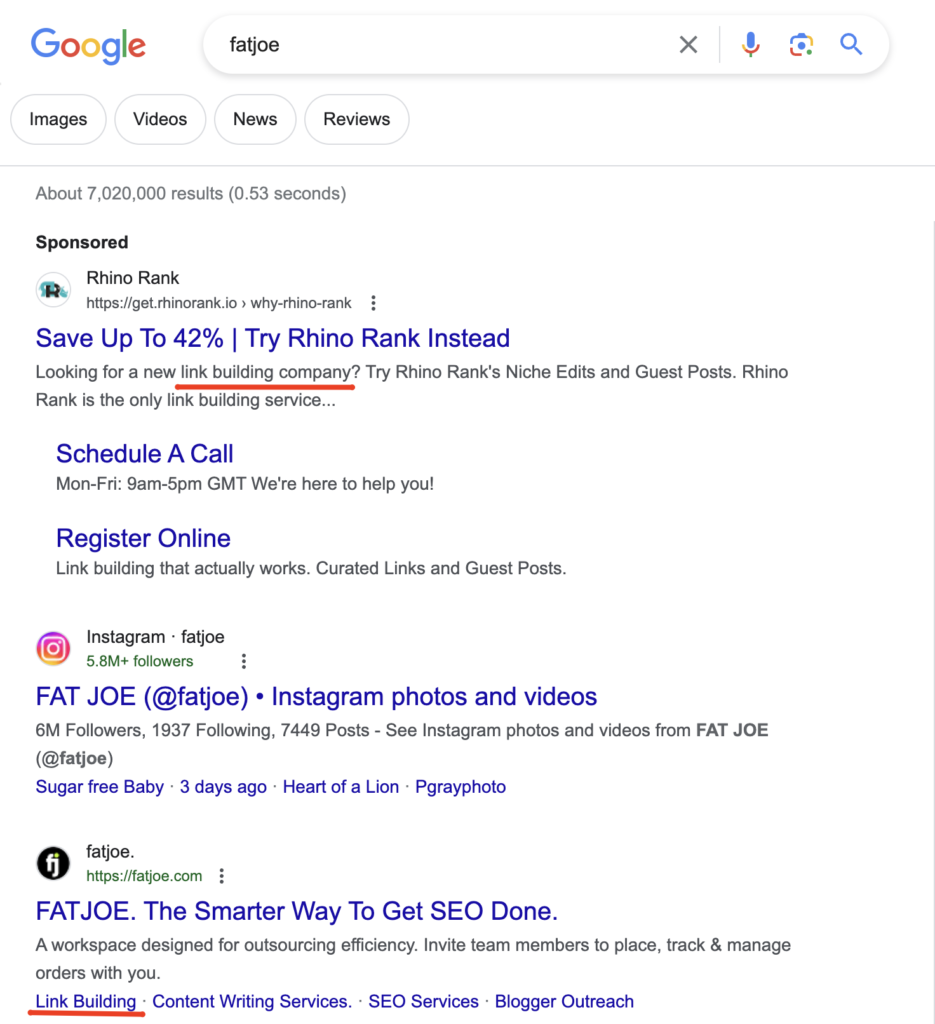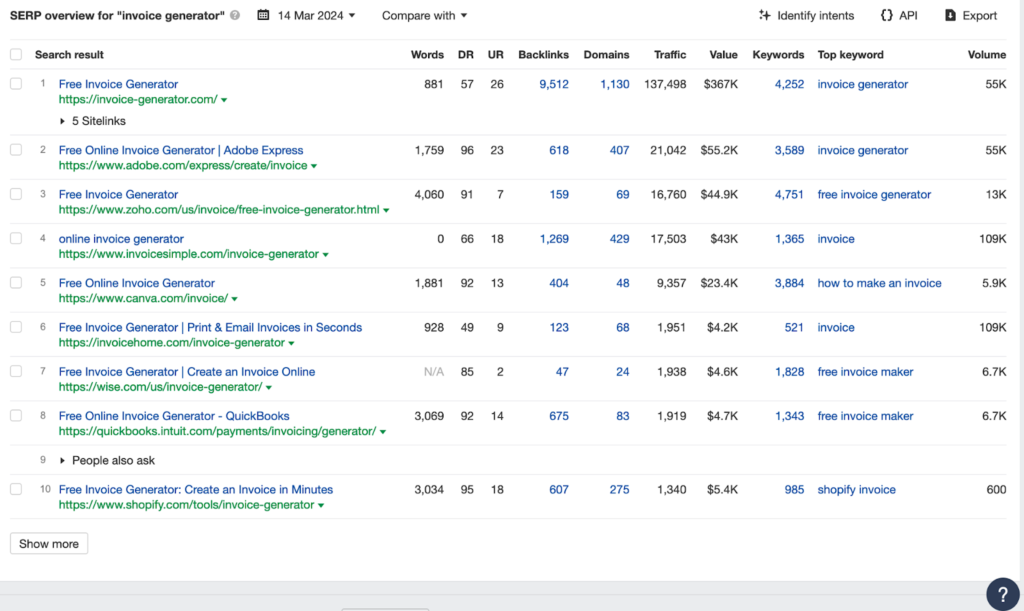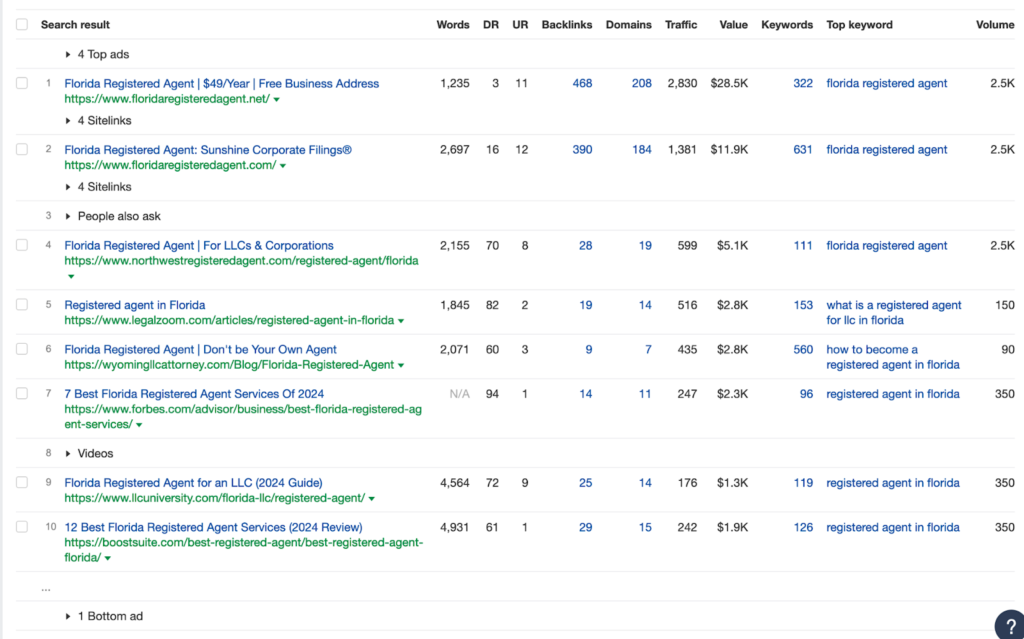Latest update: April 24, 2025
Making valuable affiliate pages demands an understanding of the target audience and the product, alongside a strategic approach to content, design, and SEO optimization.
This guide is dedicated to unveiling a detailed strategy for constructing affiliate pages that not only engage and convert your audience but also provide genuine value to users and are optimized for Google’s search algorithms. We delve into the process of selecting affiliate programs that align with your audience’s interests, and we detail how to refine every aspect of your page to meet Google’s quality standards.
What are SEO Affiliates?
The term “SEO Affiliates” refers to a specialized strategy that combines the principles of Search Engine Optimization (SEO) with affiliate marketing. This approach aims to optimize affiliate content in such a way that it ranks higher in search engine results pages (SERPs), thereby driving more organic traffic to the affiliate’s website or landing page. Understanding SEO affiliates is crucial for marketers looking to leverage affiliate marketing effectively.
Key Components of SEO Affiliates:
Keyword Optimization
Lies keyword research and optimization. Identifying and incorporating relevant, high-search-volume keywords into affiliate content ensures that the content is discoverable by the target audience.
Content Quality and Relevance
Focus on creating high-quality, informative, and relevant content that addresses the needs and questions of the target audience. This includes detailed product reviews, comparisons, and tutorials that go beyond mere promotion.
Site Structure and Navigation
An optimized site structure facilitates easier crawling by search engines and improves user experience. A well-structured affiliate site with clear navigation aids in achieving better rankings and user engagement.
Link Building
Building a network of high-quality backlinks from reputable sites within the same niche is a cornerstone of SEO affiliates. Backlinks signal to search engines that the content is valuable, thereby improving its page rank. One of the most important factors of ranking in Google is links. And to be Google-friendly, you need to use white link-building methods.
Technical Optimization
It also involves enhancing the technical performance of the website, including its l page speed, mobile responsiveness, and security features. These factors significantly impact search rankings and user experience.
What is a Valuable Affiliate Page?
Value, at its simplest means you, the webmaster, are adding content that is useful to your users other than what is provided by the affiliate advertiser.
Let’s look at an all to common case of an affiliate site adding no value. This is also known as a thin affiliate page.

Even though the page looks like a complete page, it has a great photo of the product, it has a great description, and it has great links to other similar products too. The problem is that all of that information (content) was provided by the advertiser.
The info was not just provided to this website, but to tens of thousands of other sites as well. That means if you go to another website and look at the product page you will see the exact same photo and the exact same description.

Now Google has to look at all those pages with the exact same content and decide which one is valuable. One of the first ways it does this is to say “Okay, 10,000 web pages have the exact same content, let’s just remove the content that is the same and see what happens…

Now all the sites have no content! All there is left is the logo after we remove the advertiser provided information. Oh wait… there is one that has some info on it, let’s look at that…

The owner of this website took the time to know the product they are selling. They took photos and wrote an original description. The page is much more useful than the others because all the others had the same info. By providing original information and content like photos or videos of the product they are giving users a better idea of what the product is, allowing them to make a more informed decision about their purchase.
Do Affiliate Links Help SEO?
Affiliate links, by their nature, are primarily designed for tracking sales and commissions, not for enhancing SEO. However, the relationship between affiliate links and search engine optimization (SEO) is nuanced and warrants a detailed examination. Understanding how affiliate links can indirectly influence your site’s SEO is crucial for digital marketers and content creators aiming to leverage affiliate marketing effectively.
Let’s look at what Google’s John Mueller says about affiliate links.
The key points from the video are:
- The site should have unique content;
- The site must provide value to users.
Examples of Affiliate Links
Simple Affiliate Link with ID
| https://www.example.com/product?affid=12345 |
In this example, affid=12345 is the parameter that identifies the affiliate’s unique ID, allowing the merchant to track referrals and attribute sales to this affiliate.
Affiliate Link with Username
| https://www.example.com/welcome?referrer=johndoe |
Here, referrer=johndoe uses the affiliate’s username (johndoe) as the tracking mechanism.
Complex Affiliate Link with Multiple Parameters
| https://www.example.com/purchase?affid=12345&campaign=spring_sale&product_id=67890 |
This link includes multiple parameters: affid=12345 for the affiliate ID, campaign=spring_sale for the specific marketing campaign, and product_id=67890 for the product being promoted.
Does Google Hate Affiliate Sites?
A common question among affiliate marketers is whether Google has a negative bias towards affiliate sites. The short answer is no; Google does not inherently dislike or hate affiliate sites. However, Google’s main priority is to provide its users with high-quality, relevant, and valuable content. The platform’s algorithms are designed to identify and promote content that best serves the user’s intent, regardless of whether it comes from an affiliate site or not.
Google’s objective is to serve the best possible results to its users. Affiliate sites that focus on delivering high-quality, original content, and a great user experience can perform well in search rankings. The key is to prioritize the needs and interests of your audience above the mere promotion of affiliate products. By doing so, you align your site’s goals with Google’s, making your affiliate site more likely to succeed in search rankings.
But we can notice that even though the sites have good content, unique images and their own YouTube channel, they are still losing search engine ranking positions. Does this mean the end of the era of small product review sites? More likely yes than no. Because Google is killing small independent sites, favoring the big players like: usatoday, forbes, etc.
How To Get Clicks On Your Affiliate Page?
The key to success for affiliate sites is brand traffic. Because brand queries make your site more authoritative on Google than sites that don’t have brand queries. It makes no sense for Google to give its traffic to padding sites. Another thing is that if your project has branded traffic, Google can sell this traffic to your competitors.
Fore example for branded query “fatjoe” that average search volume 4900 searches a month by the different keyword researches tools ( ahrefs, semrush etc.).

Then the obvious question comes to mind: How to get branded traffic?
From Vacancies
When posting a job, potential candidates search employer websites often by brand keyword, browse them and thus influence behavioral factors.
Creating Free Tools
Free tools are searched for on Google and bookmarked – another powerful behavioral factor. For example, it’s our free SEO tools. So, think about what helpful tool you can make for your niche.
Launching Exact Match Domains (EMD)
You register a domain name that contains the main search query. And in some cases, Google starts showing your site for this query, believing that visitors are looking for a specific site.
For examples:
Invoice-generator (.com) ranked top 1 in search results for the keyword ‘invoice generator’ despite competition from more robust competitors.

The same situation for the keywords ‘florida registered agent’

Floridaregisteredagent (.com) has the top 1 using EMD tactic. So An EMD strategy is a powerful tactic that will help you outrank your competitors.
Step-by-Step Guide to Optimize Your Affiliate Pages
Optimizing your affiliate pages for SEO is crucial for enhancing visibility, driving traffic, and ultimately increasing conversions. Follow this detailed step-by-step guide to ensure your pages are perfectly primed for search engine success.
Step 1: Keyword Research
- Identify Core Keywords: Start by identifying the primary and secondary keywords that are most relevant to your affiliate products or services. These should be terms your target audience is searching for;
- Utilize SEO Tools: Employ SEO tools like SEMrush, Ahrefs, or Google Keyword Planner to analyze keyword difficulty, search volume, and competition. Look for long-tail keywords that offer a balance between search volume and competitiveness;
- Understand Search Intent: It’s essential to understand the intent behind the keywords you select. Whether informational, navigational, transactional, or commercial, tailoring your content to match this intent can significantly impact its effectiveness.
Step 2: Content Creation
- Develop Unique Content: Create content that adds value beyond what’s available on other affiliate or manufacturer websites. This could include unique product reviews, comparisons, tutorials, and use cases;
- Keyword Integration: Integrate your chosen keywords naturally into your content, ensuring they fit seamlessly within your titles, headings, meta descriptions, and throughout the body text;
- Answer Questions: Focus on answering questions and solving problems that your audience may have. This approach not only improves SEO but also positions your page as a valuable resource.
Step 3: On-Page SEO Optimization
- Title Tags and Meta Descriptions: Make sure your title tags and meta descriptions are compelling and include your main keywords. They should entice users to click through from the search engine results page (SERP);
- Image Optimization: Use descriptive alt tags for all images, incorporating relevant keywords. This improves accessibility and helps search engines understand the content of the images;
- URL Structure: Ensure your URLs are clean, concise, and include keywords. A well-structured URL is easier for search engines to crawl and understand.
Step 4: Enhance User Experience
- Improve Site Speed: Utilize tools like Google PageSpeed Insights to identify and fix issues that may be slowing down your site. Fast-loading pages improve user experience and can contribute to higher SEO rankings;
- Mobile Optimization: Ensure your site is responsive and mobile-friendly. With the majority of searches now conducted on mobile devices, a mobile-optimized site is essential for SEO;
- Content Organization: Logically organize your content with a clear hierarchy. Use breadcrumbs, clear navigation menus, and a sitemap to help users and search engines navigate your site easily.
Step 5: Build Quality Backlinkse
- Guest Posting: Write and publish articles on reputable sites within your niche. Choose sites that have a high domain authority for maximum impact;
- Community Engagement: Participate in forums, social media groups, and other online communities related to your niche. Offer genuine advice and insights, and where appropriate, link back to relevant content on your site;
- Quality over Quantity: Focus on building high-quality backlinks rather than a high quantity of low-quality links. A few authoritative backlinks can be more beneficial than many low-quality ones.
Step 6: Monitor and Adjust
- Analytics Tracking: Regularly monitor your affiliate pages’ performance using Google Analytics. Pay attention to metrics like traffic sources, bounce rate, and conversion rates;
- Content Updates: Keep your content fresh and up-to-date. Regularly review and update your pages to reflect the latest information, products, and user feedback;
- SEO Adjustments: Based on your analytics insights, continuously refine your SEO strategy. Experiment with different keywords, content formats, and SEO techniques to discover what works best for your audience and niche.
Conclusion
By focusing on adding value, optimizing for user experience, and strategically implementing both primary and secondary keywords, your affiliate pages can attain higher rankings, attract more traffic, and ultimately, generate more conversions. In the evolving landscape of affiliate marketing, staying informed and adaptable to SEO trends will keep your content ahead of the curve.


